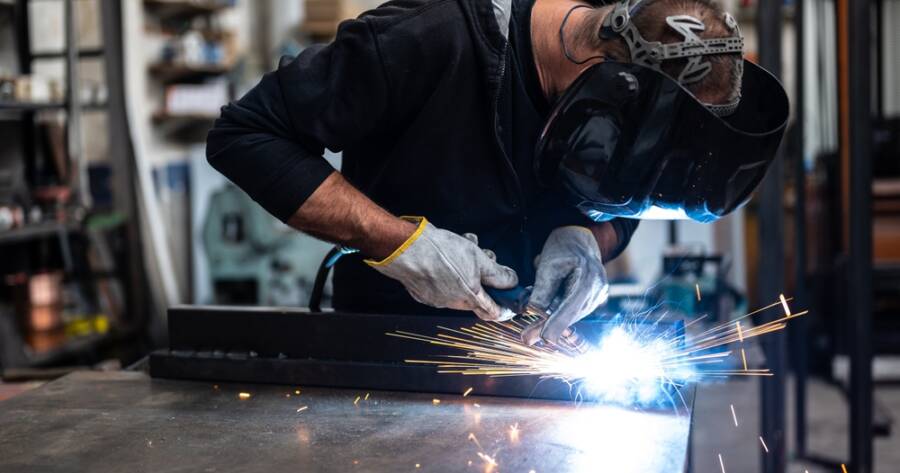Welding technology is evolving rapidly, bringing groundbreaking innovations that enhance precision, efficiency, and safety. From AI-powered automation to laser beam welding, the industry is embracing advanced techniques that redefine metal fabrication. Augmented and virtual reality are revolutionizing training, providing immersive learning experiences for welders, while multiprocess welding machines allow seamless transitions between different welding methods. These cutting-edge advancements not only improve productivity but also ensure superior weld quality, making welding more accessible and efficient than ever before. Whether you’re a professional welder, a business owner, or simply interested in the latest technological trends, these innovations are shaping the future of welding.
Understanding Different Types of Welding Machines
Welding machines are indispensable tools across various industries, playing a pivotal role in construction, manufacturing, automotive, and aerospace sectors. The choice of welding equipment directly impacts the efficiency, precision, and durability of the finished product. Different types of welding machines cater to diverse needs and projects, ranging from heavy industrial applications to intricate artistic creations.
MIG Welding Machines
MIG (Metal Inert Gas) welding machines are celebrated for their versatility and ease of use. They employ a consumable wire electrode and a shielding gas to prevent contamination, making them highly efficient for working with metals like stainless steel and aluminum. This makes MIG welders particularly popular in automotive and construction industries due to their quick performance and capability with various steel types. Beginners often favor MIG welders for their straightforward operation and minimal spark production, although they require an external gas supply for optimal functioning.
TIG Welding Machines
TIG (Tungsten Inert Gas) welding machines are known for their precision and control, making them suitable for high-quality, intricate welds. They use a non-consumable tungsten electrode along with inert gas shielding, which is ideal for delicate materials like aluminum, magnesium, and copper alloys. Although TIG welding is slower and requires a higher skill level, it produces clean, strong welds without the need for balancing heat input from a consumable electrode, making it invaluable for artistic and aerospace applications.
Stick Welding Machines
Stick welding, also known as Shielded Metal Arc Welding (SMAW), is a versatile process that uses a consumable electrode coated in flux to produce an arc. It is particularly effective for outdoor use and various metal alloys. This method is highly adaptable to rusty and dirty surfaces, making it ideal for maintenance, repair, and construction work. Despite creating a lot of spatter and requiring more skill for a clean finish, its simplicity and portability make it accessible for beginners.
Flux-Cored Arc Welding (FCAW) Machines
Flux-Cored Arc Welding (FCAW) machines offer a robust solution for welding thicker materials without needing an inert gas shielding, thanks to their tubular wire filled with flux. They are beneficial for projects conducted outdoors or under windy conditions, such as in shipbuilding and heavy equipment repair. While FCAW machines are praised for their speed and portability, they tend to be more costly due to the filler material and can generate more fumes.
Submerged Arc Welding (SAW) Machines
Submerged Arc Welding (SAW) machines are utilized for their high-speed capability and ability to produce clean welds with minimal spatter. Primarily used in industrial settings like shipbuilding and structural welding, these machines operate by passing an electric current through a granular flux, which shields the weld arc. The high productivity and superior weld quality of SAW machines make them ideal for joining thick materials in large-scale projects, although their application is limited to flat welds.
Plasma Cutting and Safety Equipment
In addition to welding, plasma cutters are essential for precise and efficient cutting of electrically conductive materials like steel, aluminum, and copper. This versatility is highly valuable in automotive repair and metal recycling. Safe operation is paramount in welding processes, necessitating the use of protective gear such as helmets, gloves, and flame-resistant clothing. Helmets are crucial for protecting against intense light and heat, while additional personal protective equipment shields welders from physical hazards and extreme temperatures.
Why You Should Learn More About Welding Machines Today
Given the critical role welding machines play across numerous industries, understanding their capabilities and applications is essential for anyone involved in fabrication, construction, or manufacturing. From the beginner-friendly MIG welders to the precision of TIG systems, each type of welding machine offers unique advantages suited to specific needs. Knowledge of different welding processes not only enhances safety but also improves the quality and efficiency of welding projects. Exploring the various options and their specific applications can provide significant benefits, inspiring innovation and excellence in both amateur and professional settings.





